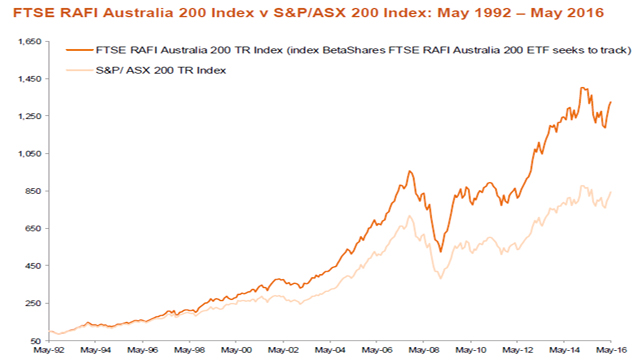[ad_1]
 Mo Haghbin is head of product within OppenheimerFunds’ Beta Solutions business. He is responsible for leading research and development of new investment solutions, including smart-beta ETFs. ETF.com recently discussed with him Oppenheimer’s approach to ETFs.
Mo Haghbin is head of product within OppenheimerFunds’ Beta Solutions business. He is responsible for leading research and development of new investment solutions, including smart-beta ETFs. ETF.com recently discussed with him Oppenheimer’s approach to ETFs.
ETF.com: What is Oppenheimer’s goal in terms of developing ETFs?
Mo Haghbin: Since the acquisition of VTL, which was a small ETF sponsor out of Philadelphia a few years ago, our focus has been very much in this category between active and broad-based or cheap beta.
Initially, we focused on expanding the revenue-weighted suite, which is just another way of thinking about fundamental indexation. It’s using a fundamental metric—be it revenue, cash flow, earnings or something else—to reweight an index. That’s fundamental indexation.
The second big category we focused on has been factor-based strategies—both single and multifactor. Our single-factor strategies are in a partnership with FTSE Russell. Our multifactor strategies, which are unique to the market, are a partnership between our active teams and our index provider.
ETF.com: You’re known for your revenue screens. When you incorporate multifactor, which factors are you talking about?
Haghbin: In the multifactor products we launched last year, we look at common factors such as size, value, momentum, quality and low volatility. How we bring those into the portfolio is very unique.
We’re not saying you should equally own all of those factors; we’re saying factors are cyclical. Therefore, they’re influenced by the macroeconomic environment and overall capital market conditions. You shouldn’t necessarily own all of them at all times evenly.
For example, in periods where the economy is expanding—GDP growth is above trend, jobs reports are healthy, manufacturing surveys are coming back positive—the factors that work well in that environment are very different from the factors that work well in a contractionary or slowdown environment. This concept of defensive factors versus pro-cyclical factors is how we think about our suite.
ETF.com: Is it one versus the other, or is it just a matter of evolution to get to all those?
Haghbin: We first launched single-factor strategies. That’s for people to do it themselves. If you wanted to build a portfolio of factors, you could say, “I want low vol and I want quality and I want size. I’m done; I’m going to do those equal weighted.”
We also offered our own version of multifactor, which takes into account cyclicality. It’s built in to the rules of the index where, on a monthly basis, we take a read of how the economy is doing. We try to understand whether we’re in an expansionary environment or a slowdown environment. And then we tilt to the factors that have historically been rewarded in those environments.
ETF.com: Which tickers are we talking about here specifically in this kind of sliding macro factor?
Haghbin: Those would be the Oppenheimer Russell 1000 Dynamic Multifactor ETF (OMFL) and the Oppenheimer Russell 2000 Dynamic Multifactor ETF (OMFS).
For example, last year the economy moved from an expansionary environment into a slowdown environment. OMFL upweighted low volatility and quality because those are the more traditional defensive factors.
If you look at the performance of that product, over the summer and through October, where volatility had picked up significantly, we added our largest amount of excess return since inception because we were more defensive with our factor positioning.
ETF.com: Do you see these as more of a loss mitigator or a performance booster?
Haghbin: If I had to characterize it, just using this year as an example, I would say these are lower risk. The downside protection has been much bigger than the upside participation.
ETF.com: What is the theme behind OppenheimerFunds ETFs? What are you trying to do?
Haghbin: We like to think about it as blending active insights with the virtues of indexation, bringing together the benefits of both. We call this smart beta, but in reality, it’s rules-based active.
We’re creating rules-based approaches to provide a better outcome for clients, whether that be risk mitigation or performance improvement. But instead of doing that on a discretionary basis, we’re doing that with a set of rules in a systematic fashion, repeatable processes into the future.
[ad_2]
Source link

